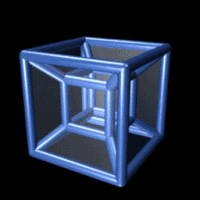
Photo from wikipedia
A two-dimensional LC (2D-LC) method was coupled to an ion mobility–high-resolution mass spectrometer (IM–MS), which enables the separation of complex samples in four dimensions [2D-LC, ion mobility (IM) and mass… Click to show full abstract
A two-dimensional LC (2D-LC) method was coupled to an ion mobility–high-resolution mass spectrometer (IM–MS), which enables the separation of complex samples in four dimensions [2D-LC, ion mobility (IM) and mass spectrometry (MS)]. This approach works as a continuous multiheart-cutting LC-system, using a long modulation time of four minutes, in comparison to comprehensive two-dimensional liquid chromatography, which allows the complete transfer of most of the first dimension peaks to the second dimension column without fractionation. Hence, each compound delivers only one peak in the second dimension, which simplifies the data handling even when ion mobility as a third and mass spectrometry as a fourth dimension are introduced. The analysis of different complex samples, such as a plant extract from Hediotys diffusa and Scutellaria barbata, a waste water inflow, and a biocoal sample, was shown. The results of the four-dimensional separation method demonstrate that with the same column combination and the same solvents and gradients, that means without method optimization, totally different samples can be separated with outstanding separation power. Each sample was spiked with cyclophosphamide and ifosfamide and the ion suppression was determined by comparison of the peak area in the complex samples and in pure water after analysis of these samples with a 1D-LC and a 2D-LC approach. It is shown that the 2D-LC method allows an external calibration for the spiked compounds in the plant and waste water sample because of the higher separation power in comparison with 1D-LC.
Journal Title: Journal of Analysis and Testing
Year Published: 2017
Link to full text (if available)
Share on Social Media: Sign Up to like & get
recommendations!